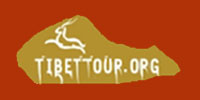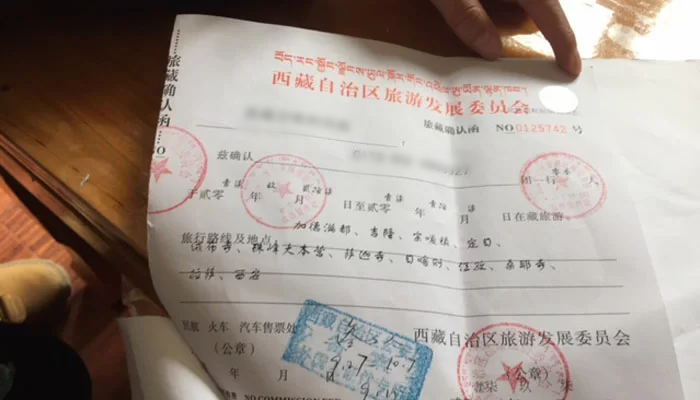Running along the northern borders of China, India, and Persia, the Silk Road was an ancient trading route that connected China and the east to Europe and the Mediterranean region. An important link that generated trade and commerce between several kingdoms and empires that would otherwise have not had this opportunity, the Silk Road is one of the most popular ancient trade routes left today. The route of the Silk Road through China ran from the eastern coast and Beijing/Shanghai to the borders of Xinjiang province with what is now Kyrgyzstan.
While the Ancient Silk Road did not actually cross into Tibet as we know it today, skirting the northern edges of the plateau, the relative closeness of the plateau makes it an ideal companion for any good Silk Road tour. And one of the best reasons to combine the two into one tour is the fact that you will be able to discover more about the different cultures and peoples of Tibet and the northwest of China.
Choose the Best Travel Time
Tibet can be visited throughout the year, and much of the Silk Road has long periods of good weather. May to October is generally regarded as the best time to travel. On the Xi’an end of the route, in Shaanxi Province, the best time for tourism is normally from March to May and September to November, as the area experiences hot rainy summers and cold dry winters.
As you proceed further northwest, you will find the best times do change slightly, with Gansu Province and Dunhuang being visited best from April to June, before the rains come. October can be too cold already by the time the rains have passed, and winter can be extremely cold.
 One need to choose the best time to take Tibet and Silk Road tour.
One need to choose the best time to take Tibet and Silk Road tour.As you pass on into Xinjiang Province, with its semi-arid desert climate for most of the region, you will find that the seasons are a little different. Xinjiang has very little rain, even in the monsoon season, and the best time to visit this part of northwest China is generally from April to October. During this period, the weather is warm to hot, and there is almost no rain. Winter, however, can be very cold, nd not an ideal time to travel this far north.
While these are generally-accepted “best” times for taking a tour of Tibet and the Silk Road, there really is no bar to traveling at any time of the year. As long as you are well prepared for the changes in climate and temperature, and the changing weather conditions from place to place, this can be an excellent year-round trip. And while you may wake up with severe frost on the ground in the depths of winter in some parts of the tour, the beauty of the crisp and clear blue skies more than makes this worthwhile.
Choose the Suitable Travel Route
You can probably find a dozen different options for combining Tibet with a Silk Road trip, and the most suitable for some may not be as good for others. However, overall, two tours in general stand out above the rest, as they give you the best of both worlds.
Lhasa – Xi’an – Dunhuang – Kashgar
For those that want a more classic Silk Road tour with a stopover in Lhasa beforehand, then you should be looking at a short tour of Lhasa, maybe four days, and then a flight to Xian, to begin the Silk Road leg of the trip.
This route is simpler and has less driving, preferring to fly between most of the destinations along the route. After spending a few days in Lhasa the Tibetan capital, you will take a direct flight to Xi’an, in Shaanxi Province. The tour of Lhasa normally includes such amazing sights as the iconic Potala Palace, the sacred Jokhang Temple, and several other monasteries.
In Xi’an, you will spend an entire day exploring the amazing attractions of this former ancient capital of Imperial China. Visit the Terracotta Warriors, the Eighth Wonder of the World, walk along the ancient City Wall, built to defend the city from invasion, and explore the Big Wild Goose Pagoda, an icon of Buddhism in ancient China.
 Visit the Terracotta Warriors in Xi'an
Visit the Terracotta Warriors in Xi'anBefore taking the short flight to Dunhuang, you can also explore the Shaanxi Provincial Museum and do some shopping on the Muslim Street. In Dunhuang, renowned for its repository of ancient Buddhist arts, you can visit the famous Mogao Grotto, where many of these great treasures still lie, dating back thousands of years. You can also visit the amazing Singing Sand Dune and experience the beauty of this natural phenomenon, and take a camel ride to admire the beauty of the Crescent Spring, an oasis in the midst of a desert.
Before taking the overnight train to Turpan, you can explore the Great Wall of the Han Dynasty just outside Dunhuang, and explore the amazing desert scenery and the famous Yumenguan Pass. After you arrive in Turpan, try exploring the renowned Suleiman Minaret and the famed Karez Wells, and take a visit to explore the ruins of the ancient city of Jiaohe, lost to the sands of the encroaching desert.
The nest leg of the trip is a flight to Urumqi, where you can visit the Heavenly Lake (Lake Namtso in Tibet is also known as this), one of the most famous of the world’s high alpine lakes, located in the midst of the Bogda Peak at more than 2,000 meters above sea level. Then it is a flight to Kashgar, to explore the Id Kah Mosque, the Old Town and the Abakh Khoja Tomb. Then take a ride along the high Karakoram Highway, with the beauty of the Pamir Mountain scenery, to the Sand Mountain, Comer Lake, Lake Karakul, and Mount Muztagh Ata. Then it is a flight back to Urumqi for your departure from China.
 The Beautiful Heavenly Lake in Urumqi
The Beautiful Heavenly Lake in UrumqiLhasa – Kailash - Kashgar – Dunhuang – Xi’an
For some, too much flying is not a good thing, and there is a tour that can help with that. An immense overland journey across Tibet to Xinjiang precedes your epic adventure along the Silk Road, and while you will fly a couple of times, the rest of the trip is done on land. This way, you get to experience more of the amazing and unique scenery of these two stunning destinations.
Your Tibetan leg of the trip starts the whole thing off, and you will travel overland from the Tibetan capital of Lhasa all the way to Kashgar in Xinjiang. The route takes you out of Lhasa, after touring the sights of the city, and on to Shigatse, passing through Gyantse and past the Karola Glacier and Lake Yamdrok, life-blood of Tibet. Then you continue on from Shigatse to stop off at the amazing Everest Base Camp, where you can stand in the shadow of the world’s highest mountain, before heading on northwest through Saga to Darchen, at the foot of Mount Kailash. The most sacred mountain in the world, Kailash is held in high esteem in four separate religions, and you will take the time to trek around the mountain with the resolute Tibetan pilgrims.
 Trekking around the Mount Kailash is a holy tour experience.
Trekking around the Mount Kailash is a holy tour experience.Then it is on to Lake Manasarovar, the sacred lake that is said to be able to absolve you of the sine of an entire lifetime, and further northwest to reach Kashgar, in the far west of the Xinjiang Uyghur Autonomous Prefecture. The westernmost city of the Silk Road, this ancient city is the largest oasis in the whole of China, and was a pearl on the trail of the ancient Silk Road. From here, you will fly on to Urumqi, where you can tour the sights of this Xinjiang capital, before taking a drive to Turpan, and the ancient Jiaohe Ruins, as well as the other sights in the city.
Then you will take the overnight train to Dunhuang, for the Mogao Grottoes and Crescent Lake, as well as the famous Singing Sand Dune, also known here as the Echoing-Sand Mountain. Then it is on by flight to Xi’an for the last leg of the tour. Here, you can see the famous Terracotta Warriors and the museum, the Big Wild Goose Pagoda, and other famous sights in this ancient former imperial capital.
 Dunhuang Singing Sand Dune is a must-see for one's Silk Road trip.
Dunhuang Singing Sand Dune is a must-see for one's Silk Road trip.Obtain the Required Travel Documents
Getting all the necessary documents for this trip may appear to be a painful affair, but in reality, it is really easy. The only document you actually need to obtain yourself is your Chinese Entry Visa. All of the other documents you will need are organized for you as part of the tour. For the part of the trip along the Silk Road, all you need is your passport and visa, as this entire route runs through mainland China.
The part of the trip that involves Tibet is the part that requires lots of tedious paperwork and documentary applications, as well as permits for just about everywhere you want to go. The good thing is that, because independent travel in Tibet is not allowed and you have to be on a pre-arranged tour, your travel agency does all of that for you. From your Tibet Travel Permit and hotel bookings to the guide and driver for the trip across the plateau, this is all done by us as part of the whole service. We can even help with your internal flights and train tickets in China.
Contact a Trustworthy Travel Agency
The first thing to do, once you have decided that this is the tour for you and you have your Chinese Entry Visa, is to contact a reputable and trustworthy travel agency to help you arrange this epic adventure. With our decades of experience of organizing tours of Tibet, as well as tours within the rest of China, we can help with all of your planning, from where to go and what to see to the route you want to take and the best way to take it.
Conclusion
If you thought planning a Silk Road and Tibet tour was hard, then you will be surprised. When using a tour agency like ours, we can make all the arrangements for you, with only a few exceptions. We will help with your itinerary, permits and passes, and tour guides for the whole trip. So if you are planning on taking an epic Tibet and Silk Road adventure, there has never been a better time to do so.


























 One need to choose the best time to take Tibet and Silk Road tour.
One need to choose the best time to take Tibet and Silk Road tour. Visit the Terracotta Warriors in Xi'an
Visit the Terracotta Warriors in Xi'an The Beautiful Heavenly Lake in Urumqi
The Beautiful Heavenly Lake in Urumqi Trekking around the Mount Kailash is a holy tour experience.
Trekking around the Mount Kailash is a holy tour experience. Dunhuang Singing Sand Dune is a must-see for one's Silk Road trip.
Dunhuang Singing Sand Dune is a must-see for one's Silk Road trip.








Ask a Quick Question